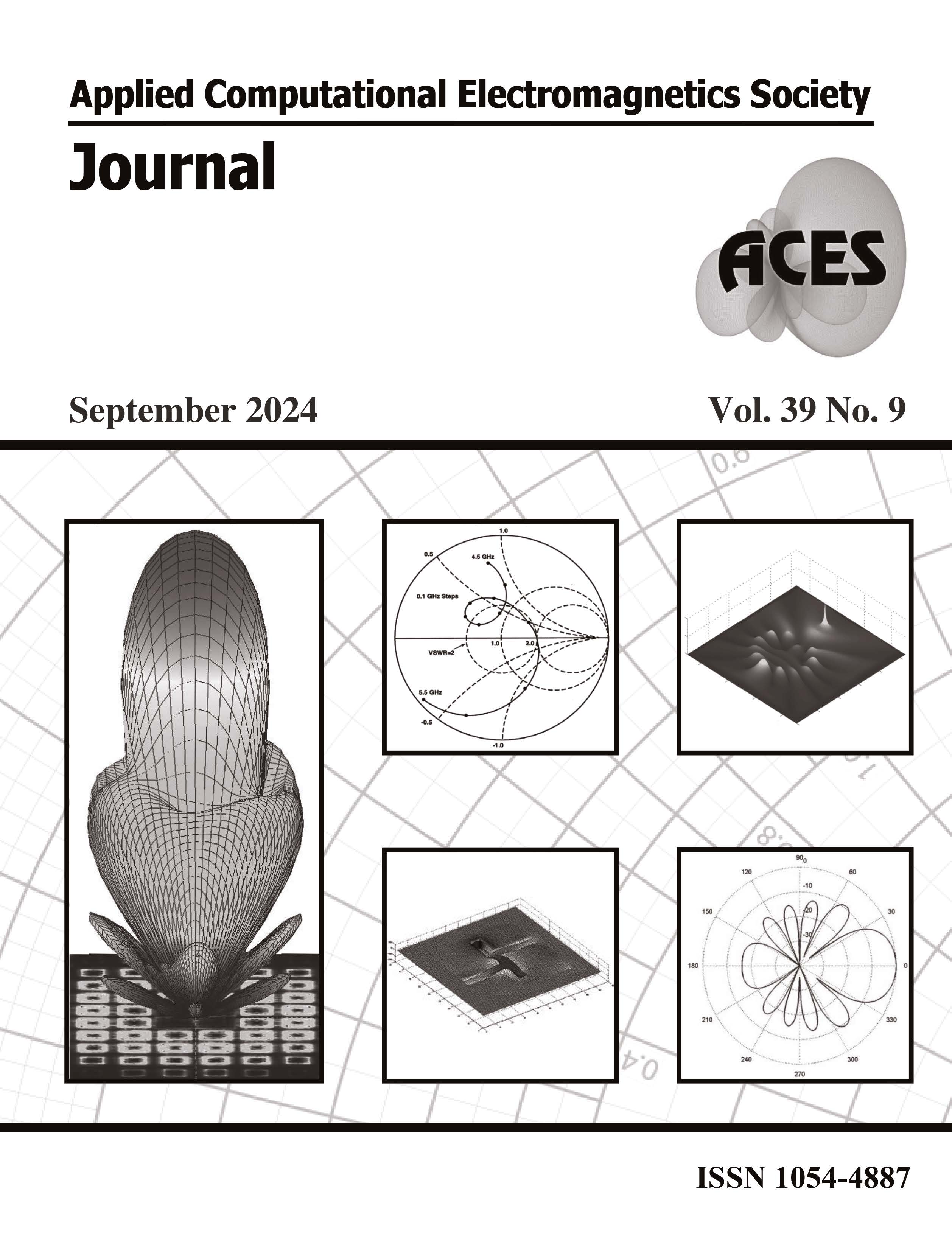Calculative Method on Electromechanical Strength for Rectangular and T-Shaped Rail over a Flat Surface Armature
DOI:
https://doi.org/10.13052/2024.ACES.J.390908Keywords:
Area’s moment of inertia, armature velocity, critical velocity, dynamic analysis, electromagnetic railgun launching, electromechanical strength, Maxwell-Simplorer coupledAbstract
The electromagnetic railgun launching (EMRL) system is a type of long-range projectile launch that does not require any chemical propellant and can accelerate masses ranging from milligrams to kilograms to velocities of more than several kilometers per second. To make the rail stronger, electromechanical strength analysis was performed by calculating the area’s moment of inertia and critical velocity. One of the most essential mechanical aspects of rails is their moment of inertia, which has a direct impact on critical velocity and launch performance. Geometry and material both have an impact on the rails’ electromechanical performance. This paper describes the increase in electromechanical performance achieved by constructing two types of rail cross-sections - rectangular rails and T-shaped rails - based on structural analysis and current distribution from coupled electromagnetic (EM) simulation. The investigation found that T-shaped rails have higher moments of inertia than rectangular rails for the same cross-sectional area and width. However, the mechanical performance differences between the two geometries are not significant. Therefore, the advantage of larger moments of inertia for a given cross-sectional area is limited. EM analysis has been extended to a 3-D finite element method (FEM) for both rails by linking it with Simplorer using the Maxwell-Simplorer coupled (MSC) method with a flat surface C-shaped armature. When compared to rectangular and T-shaped rails, the T-shaped rail has a lower current density at the inner curvature but a greater at the contact interface.
Downloads
References
Y. Zhou, P. Yan, W. Q. Yuan, J. Wang, and M. T. Li, “Current distribution and inductance gradient calculation at different rail geometric parameters,” in 2009 IEEE Pulsed Power Conference, Washington, DC, pp. 1290-1293, 2009.
A. Keshtkar, “Effect of rail dimension on current distribution and inductance gradient,” in 2004 12th Symposium on Electromagnetic Launch Technology, Snowbird, UT, pp. 359-362, 2004.
L. Jin, B. Lei, Q. Zhang, and R. Zhu, “Electromechanical performance of rails with different cross-sectional shapes in railgun,” IEEE Transactions on Plasma Science, vol. 43, no. 5, pp. 1220-1224, May 2015.
S. Liu, J. Ruan, Z. Du, D. Wang, and C. Zhao, “Calculation of railgun inductance gradient by 2-D finite element method,” in 2008 International Conference on Electrical Machines and Systems, Wuhan, pp. 4057-4060, 2008.
L. Jin, B. Lei, Z. Li, and Q. Zhang, “Comparison simulation of friction heat and joule heat in electromagnetic railgun,” Applied Mechanics and Materials, vol. 203, pp. 401-405, 2012.
M. N. Saravana Kumar and R. Murugan, “Analysis of inductance gradient and current density distribution over different cross-section of rails,” International Journal of Electrical and Computer Engineering, vol. 8, no. 02, pp. 723-729,2018.
M. N. Saravana Kumar, R. Murugan, and Shivkumar Poorani, “Inductance gradient and current density distribution for T-shaped convex and concave rail cross-sections,” International Journal of Engineering & Technology (UAE), vol. 7, no. 01, pp. 237-240, 2018.
A. Keshtkar, Z. Jafari Khorrami, and L. Gharib, “Comparison of inductance gradient and electromagnetic force in two types of railguns with two projectiles by finite element method,” IEEE Transactions on Plasma Science, vol. 45, no. 8, pp. 2387-2392, 2017.
M. S. Bayati, A. Keshtkar, and S. V. A.-D. Makki, “Analyzing the current distribution, magnetic field and inductance gradient at the circular rail in comparison to rectangular rail,” in 2012 16th International Symposium on Electromagnetic Launch Technology, Beijing, China, pp. 1-5, 2012.
K. Daneshjoo, M. Rahimzadeh, R. Ahmadi, and M. Ghassemi, “Dynamic response and armature critical velocity studies in an electromagnetic railgun,” IEEE Trans. Magn., vol. 43, no. 1, pp. 126-131, Jan. 2007.
K. B. Lewis and N. V. Nechitailo, “Transient resonance in hypervelocity launchers at critical velocities,” IEEE Trans. Magn., vol. 43, no. 1, pp. 157-162, Jan. 2007.
S. Timoshenko, “Method of analysis of statistical and dynamical stresses in rail,” in Proc. 2nd Int. Congr. Appl. Mech., Zürich, Switzerland, pp. 1-12, 1927.
J. Gallant and P. Lehmann, “Experiments with brush projectiles in a parallel augmented railgun,” IEEE Transactions on Magnetics, vol. 41, no. 1, pp. 188-193, 2005.




